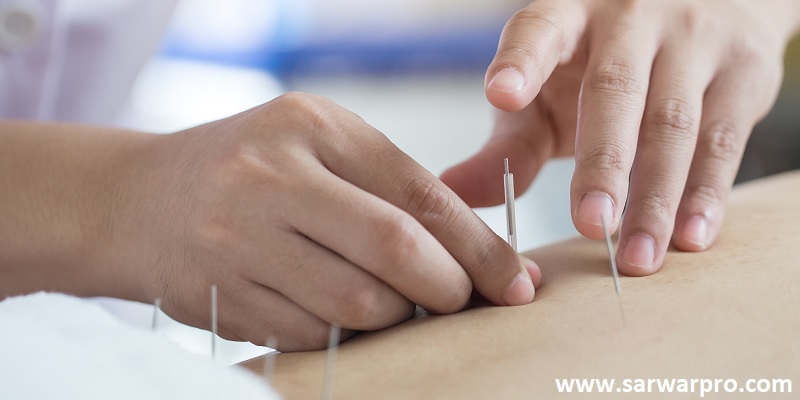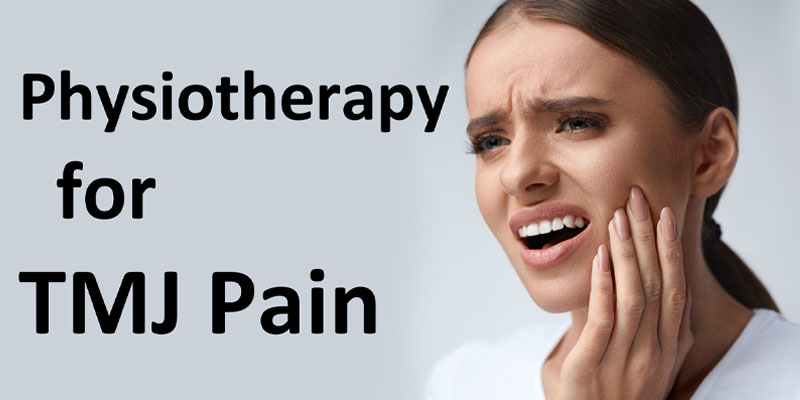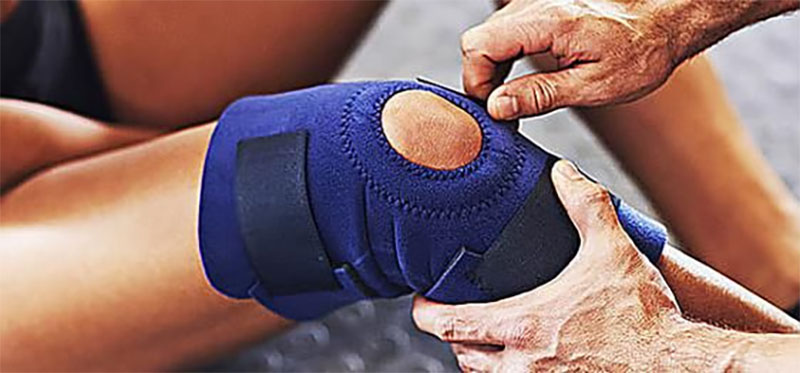
Adhesive capsulitis, also known as “frozen shoulder”, is a painful syndrome of the shoulder, which causes a progressive reduction in the range of motion of the shoulder, being one of the main causes of functional disability of the shoulder.
One of the structures that make up the shoulder complex is the joint capsule. This collagen-based, elastic and flexible structure contributes to the stability and function of this joint.
Adhesive capsulitis is an inflammatory condition of the joint capsule that courses with contracture, pain and stiffness and promotes significant restriction of active and passive movement of the shoulder.
In many cases the cause is unknown, but it is known that it is more common in women (40 to 60 years old), it can also be related to diabetes mellitus, thyroid disorders, previous trauma and almost always with reports of a previous episode in the other shoulder.
Adhesive capsulitis is a pathology that has a beginning, middle and end cycle. This cycle is divided into 4 phases:
==>> Inflammatory phase: usually in the first 3 months. In this phase, the patient presents acute pain on active or passive movement and limitation for flexion, abduction and rotations.
==>> Freezing phase: occurs between the third and ninth month of the disease and the patient has chronic pain on movement, in addition to significant limitation of movement.
==>> Frozen shoulder: at this time, which usually occurs between the ninth and fifteenth month of the disease, the pain is minimal, but the limitation of movement (especially rotations) is quite significant.
==>> Thawing phase: last phase of the disease, the patient already has a considerable improvement in range of motion and the pain is almost zero.
The treatment of Adhesive Capsulitis is basically conservative, and the most important thing is to respect the patient’s symptoms in decision making. In the initial phase, the patient usually seeks a medical service and performs serial blocks of the subscapular nerve.
When arriving at physiotherapy, if the patient has a lot of pain and inflammatory signs, it is worth investing in resources such as combined therapy, laser, US and analgesic currents. The range of motion must be maintained and manual therapies with the aim of recovering them will be introduced after the blockade, as well as the gain in muscle and sensorimotor strength.
Physical Therapy in Adhesive Capsulitis
The goal of physical therapy in adhesive capsulitis is to eliminate discomfort and restore shoulder mobility and function. Considering the pathophysiology of adhesive capsulitis of the shoulder, there are several modalities of Physiotherapy in Dwarka. Each procedure is an integral part of the physiotherapy program and must be in accordance with the clinical aspects and the stage of the condition.
At first, cryotherapy is performed for 30 minutes two to three times a day, then transcutaneous electrical neurostimulation (TENS), with the aim of reducing pain and mobilization with pendular exercises and gentle passive mobilization of the shoulder, which can and should be repeated at home by the patient.
Although heat applications help to reduce pain, they are not necessarily the most indicated, due to some factors, passive or active mobilization is the most effective measure, as they significantly help to increase the range of motion.
Kinesiotherapy
Initially, inflammation control is sought in the treatment, for this it is necessary to eliminate any activity that may worsen the condition.
The use of analgesics and non-hormonal anti-inflammatory drugs can help with recovery, and intra-articular corticoid infiltration is a very indicated measure to reduce pain and consequently improve mobility.
Another treatment option is manipulation of the glenohumeral joint under anesthesia, aiming to reduce the period of joint stiffness, being a technique that favors the early restoration of movements and accelerates the return of function in the primary form.
This procedure, although indicated, should be done with caution as it can cause aggravation in patients with osteopenia in the humerus, osteoporosis and diabetes, in addition to other complications.
Analgesia makes it possible to perform Codmann pendular exercises for decoaptation, relaxation of muscle spasm, bringing pain relief and maintenance of minimum joint amplitude.
Stretching
Stretching is used to increase the length of the soft tissue structures that were affected by the problem and consequently shortened, which causes mobility deficit. This procedure makes it possible to increase the range of motion.
There are several stretching techniques that can be used, and they are determined by the specialist Physiotherapist in Dwarka based on the assessment of the patient’s condition and needs. We can cite as examples the posterior capsular stretching and stretching with the hands behind the back.
It is recommended that these exercises be practiced with the individual standing with the lumbar spine flexed at 90º. Movements are performed clockwise, counterclockwise, latero-lateral and anteroposterior.
It is important that, at the time of execution, the patient has the scapular muscles relaxed as much as possible, this allows the movements to extend as far as possible.
The professional physiotherapist in Dwarka can also guide the patient to reproduce the exercises at home with the help of a specific object and in an appropriate way. In general, a stick is used for this.
Stretching seeks to increase the length of shortened tissue structures thereby increasing range of motion. There are several stretching techniques that can be applied, which will be indicated by the professional according to the patient’s need.
Stretching exercises, whether active or passive, aim to restore movement in the affected limb, improving not only symptoms such as pain, but also your activities of daily living.
Cryotherapy
Cryotherapy is a treatment that uses cold for therapeutic treatment, very common for problems related to the musculoskeletal system, especially in the acute phases of inflammatory processes.
The cold applied to the affected limb helps to reduce the inflammatory process and helps to reduce edema, relieving pain. The explanation for this reaction is the effect of cold on nerve fibers, since it slows down impulse conduction, decreasing sensitivity.
Ultrasound
Ultrasound as a therapeutic method has been used due to its deep heating effects, which causes an increase in blood flow, and increases the speed of tissue repair and consequent improvement of the lesion.
When ultrasound penetrates the body, it can have an effect on cells and tissues through two physical thermal and athermal mechanisms, in thermal effects the ultrasound travels through the tissues, where a part of it is absorbed, and this leads to generation of heat within the tissue, where they lead to pain relief, decreased joint stiffness and increased blood flow, being of fundamental importance in the acute phase.
In athermic effects, stimulation of tissue regeneration, soft tissue repair, increased blood flow in chronically ischemic tissues, protein synthesis and bone repair can be observed. It is assumed that one or more of the following physical mechanisms are involved in the production of these athermal effects, such as cavitation, acoustic currents and standing waves.
TENS
Tens or electrotherapy is a treatment that uses electrical current to improve injuries, promoting pain relief, as it normalizes circulation in the affected region, while activating the system that inhibits pain.
TENS (Transcutaneous Electrical Nerve Stimulation) is an analgesic current where peripheral nerves are stimulated through electrodes attached to the skin for therapeutic purposes.
The intensity of the current will depend on the parameters used during the treatment, according to what was directed by the physical therapist.
Regardless of the associated measure, Physiotherapy in Dwarka is an indispensable treatment in these cases, and should be started as soon as possible It is important to understand that treatment done properly and as soon as possible allows for a faster improvement and reduces the chances of a possible functional limitation of the member.
If you identify any of the symptoms listed above, look for a doctor immediately, he will certainly, in addition to requesting appropriate tests and prescribing pain relief medication, refer you to a Physiotherapist in Delhi for adequate treatment of the problem.
The procedures listed above must be performed by a specialized professional Physiotherapist in Delhi, and in the case of the use of anesthetics, follow-up by an anesthetic team.
Physiotherapy sessions in Dwarka for the treatment of Adhesive Capsulitis are usually prolonged and performed daily. For this reason, the understanding and cooperation of the patient in relation to the exercises is also a predominant and essential factor for the improvement and recovery of the patient.
Also remember to be careful when doing exercises and other activities that can cause injury to the muscles and joints of the body. Always seek the follow-up of a professional in the case of gyms for example.







